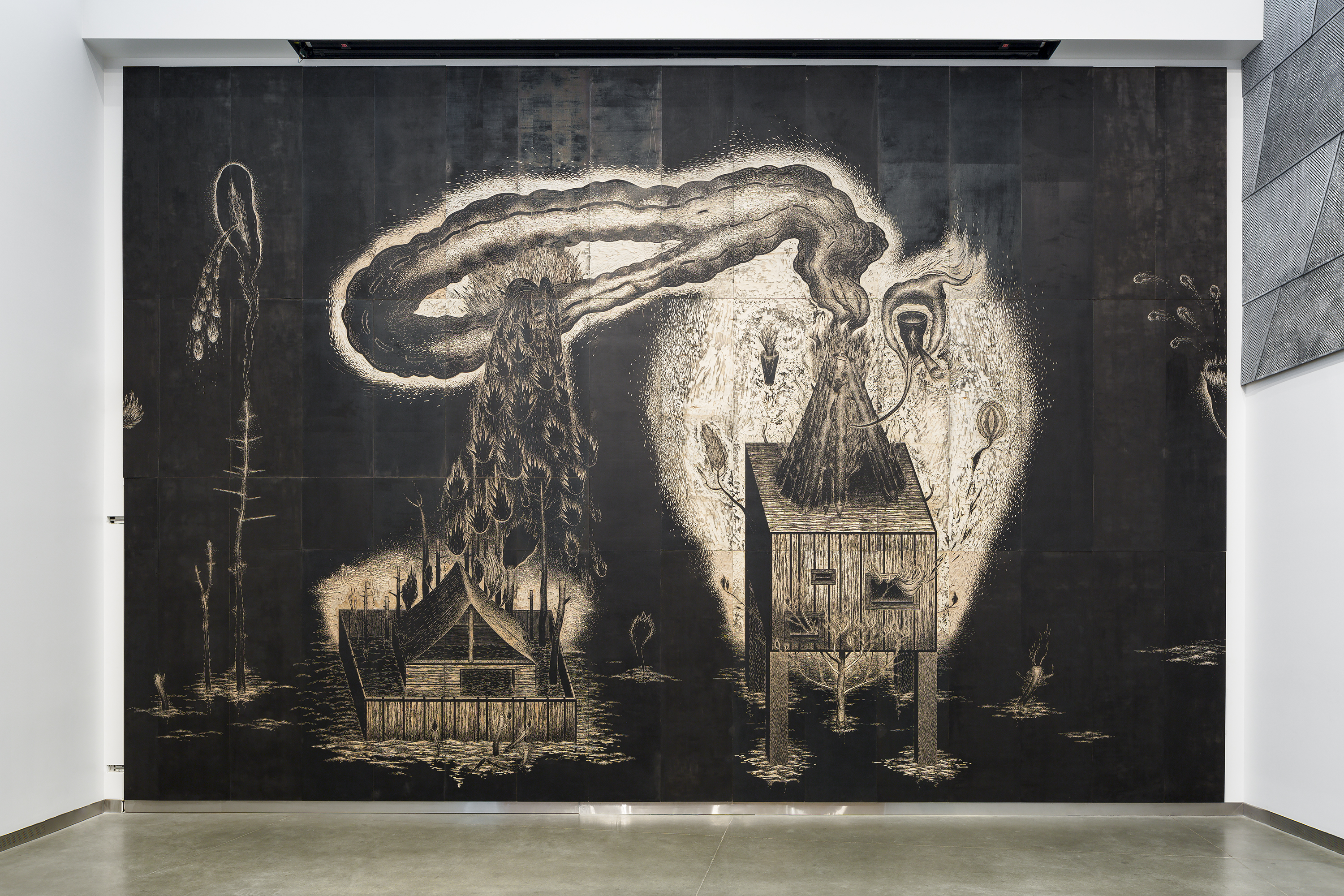Abstract
The last two decades have brought a visible and perceptible change in artistic printmaking practices. Besides traditional forms of presentation, i.e., framed or unframed print on paper or any other surface, we may observe new ways of interacting with viewers, who become more and more involved in transforming themselves into active participants or even co-producers of the artistic project. This paper focuses on such artistic proposals, and if more classical artworks are mentioned, the reason is their non-traditional aspects like provocative visual play with viewers’ perceptions.
Those formal aspects of analysed artistic examples are linked to the ideas expressed by the artists in question, which revolve around different crises and catastrophes that humanity is facing today. The leitmotiv of the general approach represented by Sean Caulfield, Karol Pomykała or Angela Snieder is related to the postulate posed by Jean-Luc Nancy (2015, p. 8), that:
"We are being exposed to a catastrophe of meaning. Let’s not hurry to hide this exposure under pink, blue, red, or black silks. Let us remain exposed, and let us think about what is happening [ce qui nous arrive] to us: Let us think that it is we who are arriving, or who are leaving."
References
Bailey, S. (2018) ’Beyond Hope and Despair: Staying with the Present’ in Sean Caulfield. Active Workings [exhibition catalogue]. Vernon: Vernon Public Art Gallery, p. 9–11.
Caulfield, S. (2020) Artist’s Statement.
Crutzen, P.J. and Stoermer, E.F. (2000) ‘The Anthropocene’,
IGBP Newsletter 41 [online]. Available at: http://www.igbp.net/ download/18.316f18321323470177580001401/1376383088452/NL41. pdf (Accessed: 15 May 2022).
Crutzen, P.J. (2002) ‘Geologe of mankind’, Nature, 415(3), p. 23.
Davies, H. and Turpin, E. (2015) ‘Art & Death: Lives Between the Fifth Assessment & the Sixth Extinction’ in Davies, H. and Turpin, E. (eds.) Art in the Anthropocene. Encounters Among Aesthetics, Politics, Environments and Epistemologies. 1st edn. London: Open Humanities Press, pp. 3-29.
Davies J. (2016) The Birth of the Anthropocene. 1st edn. Berkeley: University of California Press.
Dundes, A. (1988) ‘Introduction’ in Dundes, A. (ed.) The Flood Myth. Berkeley and Los Angeles: University of California Press, pp. 1-7.
Habel, N.C. (1988) ‘The Two Flood Stories in Genesis’ in Dundes, A. (ed.) The Flood Myth. Berkeley and Los Angeles: University of California Press, pp. 13-28.
Harvey, D. (2019) Clarity through Duplicity: On “Obscura”. Edmonton: Main Space Gallery.
Jenkins, H. (2006) Convergence Culture: Where old and new media collide. 1st edn. New York: New York University Press.
Koutsourakis, A. (2017), ‘Visualizing the Anthropocene Dialectically: Jessica Woodworth and Peter Brosens’ Eco-Crisis Trilogy’, Film- Philosophy, 21(3), pp. 299-325.
Lambert, T. (2014) ‘Glossary: users speak’ in Lupton, E. (ed.) Beautiful Users: Designing for People. 1st edn. New York: Princeton Architectural Press, pp. 128-139.
Leeming, D. (2005) The Oxford Companion to World Mythology. 1st edn. New York: Oxford University Press.
Lévy, P. (1997) Collective Intelligence: Mankind’s Emerging World in Cyberspace. 1st edn. Cambridge, Mass.: Perseus Books.
Mirzoeff, N. (2014) ‘Visualizing the Anthropocene’, Public Culture 2014, 26(2), pp. 213-232.
Nancy, J.-L. (2015) After Fukushima. The Equivalences of Catastrophes. Trans. Charlotte Mandell. 1st edn. New York: Fordham University Press.
Pieńkos, A. (2000) Okropności sztuki. Nowoczesne obrazy rzeczy ostatecznych. 1st edn. Gdańsk: Słowo/Obraz Terytoria.
Pomykała, K. (2019) Artist’s Statement.
Poprzęcka, M. (2009) Inne obrazy. Oko, widzenie, sztuka Od Albertiego do Duchampa. 1st edn. Gdańsk: Słowo/Obraz Terytoria.
Snieder A. (2020) Artist’s Statement.
Steffen, W., Crutzen, P.J. and McNeill, J.R. (2007) ‘The Anthropocene: Are humans now overwhelming the great forces of nature?’, Ambio, 36(8), pp. 614-621.
Toffler, A. (1980) Third Wave. 1st edn. New York: Bantam Books.

This work is licensed under a Creative Commons Attribution 4.0 International License.
Copyright (c) 2023 Marta Anna Raczek-Karcz
